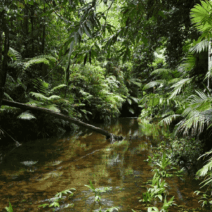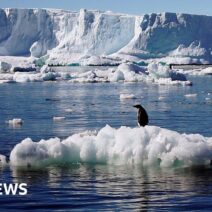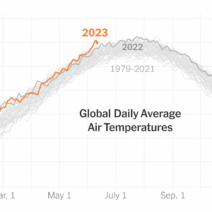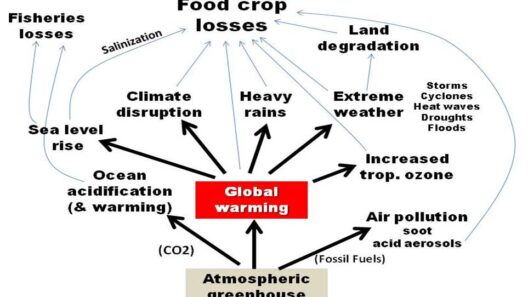The intricate tapestry of climate change is woven with the threads of industrialization, energy consumption, and the burning of fossil fuels. Just as a symphony relies on various instruments to create harmonious sound, our planet’s climate is influenced by a myriad of nations, each contributing notes of carbon emissions. Understanding which countries contribute the most to climate change involves peeling back layers of complexity to reveal the driving forces behind atmospheric alterations.
At the forefront of this ecological conundrum stands China, a behemoth of manufacturing and economic prowess. With its smokestacks billowing incessantly, this nation accounts for a staggering portion of global carbon dioxide emissions. Often likened to a giant locomotive barreling down a track, China’s rapid industrial growth has not only propelled its economy but has also left an indelible carbon footprint. The infusion of coal as an energy source fuels this machine, resulting in dire consequences for air quality and global temperatures. While efforts are being made to pivot towards renewable energy, the sheer scale of emissions generated over the years paints a picture of urgency.
The United States emerges as the second largest contributor, a superpower emboldened by consumption. It’s as if the nation wears a crown adorned with gems of prosperity, yet these gems also symbolize an ostentatious reliance on fossil fuels. The extensive use of automobiles, along with a lifestyle deeply engrained in convenience, creates a persistent demand for energy. The average American’s carbon footprint is significantly larger than that of many other nations. This overconsumption, paired with significant industrial activities, positions the U.S. as a formidable player in the climate crisis narrative. Transitioning to greener practices remains an arduous journey, but a plethora of initiatives are springing forth in the quest for sustainability.
India, with its rapidly expanding economy, is a nation on the rise. Like a wildfire spreading through a dry forest, its development carries immense potential, yet it too brings with it a surge in carbon emissions. The dichotomy of progress and environmental degradation epitomizes India’s struggle. Urbanization leads to increased energy demands, predominantly met by coal and other fossil fuels, which exacerbate climate change. While there is an enthusiastic movement towards renewable energy, the challenge lies in balancing economic growth with ecological preservation. Each new skyline that emerges also casts a shadow over the glaciers retreating in the Himalayas.
Russia, a vast land of resources, often represents another character in this unfolding drama. The country’s reliance on oil and gas exports has cemented its status as a leading contributor to greenhouse gas emissions. The analogy of a Pandora’s box is fitting, for the extraction and utilization of these fossil fuels not only brings economic benefits but also unleashes severe ecological repercussions. Russia’s position as a major player in the global energy market complicates its climate responsibilities. Methane leaks from permafrost and natural gas production compound the hazards tied to its contributions to climate change.
Germany, often heralded as an environmental vanguard, carries its own complexities. Despite leading the charge in renewable energy with initiatives like the Energiewende, the country’s historical reliance on coal presents a paradoxical narrative. The metaphor of a phoenix emerging from ashes is apt; the nation is actively working to transform its energy landscape while grappling with remnants of a carbon-heavy past. The legacy of industrialization is difficult to shake off, yet intentions to innovate and invest in clean technologies signal a commendable desire to reduce emissions.
Brazil, with its lush biodiversity, stands at a critical junction. The Amazon rainforest, often referred to as the “lungs of the Earth,” is under siege due to deforestation. This vibrant yet dwindling ecosystem is pivotal not only for biodiversity but also for carbon storage. The metaphor of a great beast in slumber rings true; Brazil’s potential as a global environmental steward is immense, but industrial agriculture and logging practices threaten to awaken a catastrophic chain reaction of climate consequences. Protecting this natural treasure is not simply an ecological imperative but a global responsibility.
Yet, this complex tableau is far from complete. Countries such as Indonesia, Japan, and Canada add their voices to the chorus of climate contributors, each embodying unique challenges and potential. Indonesia faces deforestation and peatland degradation, while Japan, despite its technological advancements, grapples with energy policies post-Fukushima. Canada, abundant with resources, confronts the environmental impacts of tar sands extraction and pipeline projects.
Consequently, the narrative of climate change is not merely one of blame but rather a clarion call for collective accountability. Each nation, as a pivotal note in this symphony, must reevaluate its role and the shared responsibility to mitigate climate change. The metaphor of a fragmented mirror serves well here; while each country reflects its unique circumstances, together they form a shattered image of our planet in jeopardy.
In conclusion, the quest to understand which countries contribute the most to climate change is an intricate journey filled with challenges and opportunities. It is essential to recognize that every nation, regardless of its current status, has the potential to alter the course of this trajectory. Like gardeners tending to a fragile ecosystem, the global community must collaborate, innovating and nurturing green initiatives to mend the wounds inflicted upon our planet. The time for action is now; the symphony of climate change demands a harmonious response.







